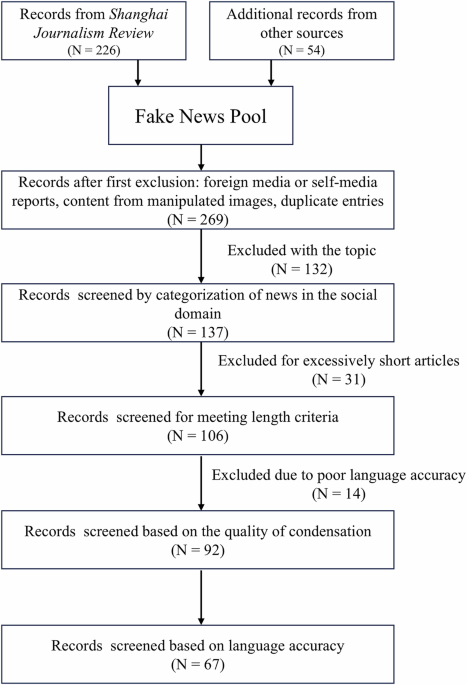Listen to the article
In the ever-evolving landscape of digital information, misinformation has emerged as one of the most significant challenges facing modern society. A comprehensive examination of recent research reveals the complex nature of fake news propagation and its profound impact on global communication systems.
The spread of false information online has become a critical concern for researchers, policymakers, and technology companies alike. According to a 2020 study by Meel and Vishwakarma published in Expert Systems with Applications, social media platforms have created unprecedented opportunities for information pollution, allowing misinformation to spread farther and faster than ever before.
This phenomenon gained particular attention during the 2016 U.S. presidential election, with Allcott and Gentzkow’s analysis in the Journal of Economic Perspectives demonstrating how social media ecosystems facilitated the rapid dissemination of false political narratives. Their research highlighted the role of platform algorithms and user behavior in creating information bubbles that reinforced existing beliefs.
The COVID-19 pandemic further exacerbated these issues. Caliskan and Kilicaslan’s cross-national study in the Journal of Computational Social Science (2023) documented how health-related misinformation flourished during global health crises, with concerning implications for public health outcomes and pandemic response efforts.
What makes fake news particularly challenging to combat is its inherent psychological appeal. A groundbreaking 2018 study by Vosoughi, Roy, and Aral published in Science found that false news stories spread significantly more rapidly and broadly than accurate ones. Their analysis of Twitter data revealed that false information reached more people and traveled deeper into social networks than factual content.
“Fake news is designed to be emotionally resonant, which makes it particularly captivating to the human brain,” explains a 2022 paper by Grignolio, Morelli, and Tamietto in the European Journal of Neuroscience. Their research suggests that misinformation often triggers emotional responses that bypass critical thinking processes, making false content more likely to be shared without verification.
Cognitive psychology offers important insights into why individuals fall for and share misinformation. Pennycook and Rand’s comprehensive review, “The Psychology of Fake News” (2021), identifies key factors including cognitive laziness, confirmation bias, and emotional triggers that make people susceptible to false information. Their research suggests that most people actually prefer accurate information but often fail to engage analytical thinking when encountering news on social media.
Recent research has also identified specific personality traits associated with sharing misinformation. A 2022 study in the Journal of Experimental Psychology by Lawson and Kakkar found correlations between political ideology, conscientiousness, and the likelihood of sharing false content. Their findings suggest that addressing fake news requires understanding both psychological and sociological factors.
The challenge extends beyond Western contexts. Wang, Rao, and Sun’s 2020 analysis of fake news in China identified unique characteristics and distribution patterns within Chinese social media ecosystems, highlighting the need for culturally tailored approaches to misinformation research and intervention.
Encouragingly, researchers have begun developing effective countermeasures. A 2021 Nature study by Pennycook and colleagues demonstrated that simply prompting users to consider accuracy before sharing content significantly reduced the spread of misinformation. This approach, called “accuracy nudging,” has been replicated across multiple studies and contexts.
More recently, Spampatti and colleagues’ 2024 research in Nature Human Behaviour tested psychological inoculation strategies across 12 countries, finding that pre-emptively exposing people to misinformation techniques can build resistance against false content.
A particularly promising approach comes from Arechar and colleagues’ 2023 study in Nature Human Behaviour, which tested misinformation countermeasures across 16 countries on six continents. Their findings suggest that while cultural contexts matter, certain strategies—like promoting analytical thinking—show cross-cultural effectiveness.
As social media platforms and misinformation techniques continue to evolve, researchers are calling for multidisciplinary approaches combining cognitive psychology, computer science, and communication studies to address this complex challenge. The research consensus suggests that effective solutions will require coordination between technology companies, educational institutions, and policymakers to foster media literacy and create information environments that reward accuracy rather than sensationalism.
Verify This Yourself
Use these professional tools to fact-check and investigate claims independently
Reverse Image Search
Check if this image has been used elsewhere or in different contexts
Ask Our AI About This Claim
Get instant answers with web-powered AI analysis
Related Fact-Checks
See what other fact-checkers have said about similar claims
Want More Verification Tools?
Access our full suite of professional disinformation monitoring and investigation tools




10 Comments
The release of this database is a significant development in the ongoing fight against online misinformation. I look forward to seeing how the research community leverages this data to gain new insights.
Tackling fake news requires a collaborative, multidisciplinary approach. This database could foster valuable cross-pollination of ideas and strategies.
The development of a comprehensive database on social fake news is an important step in understanding and mitigating the spread of misinformation online. Analyzing the neurological and behavioral factors behind fake news propagation could yield valuable insights.
This database could help researchers and platforms better identify and address the root causes of fake news sharing.
This database seems like a promising resource for researchers studying the spread of misinformation. I’m interested to see how the brain and behavioral measures could shed light on this complex problem.
Analyzing the neurological and social dynamics of fake news sharing is an important step towards developing effective countermeasures.
The proliferation of fake news is a significant challenge in the digital age. I’m curious to see how this database from China will be used to study the problem and develop solutions.
Addressing misinformation requires a multifaceted approach involving technology, policy, and public education. This database could be a useful tool in that effort.
Fake news has had serious real-world consequences, so I welcome efforts to better understand the psychological and neurological factors behind its spread. Rigorous research in this area is needed.
While the source is China, the insights gained from this database could be valuable globally in combating the threat of misinformation.